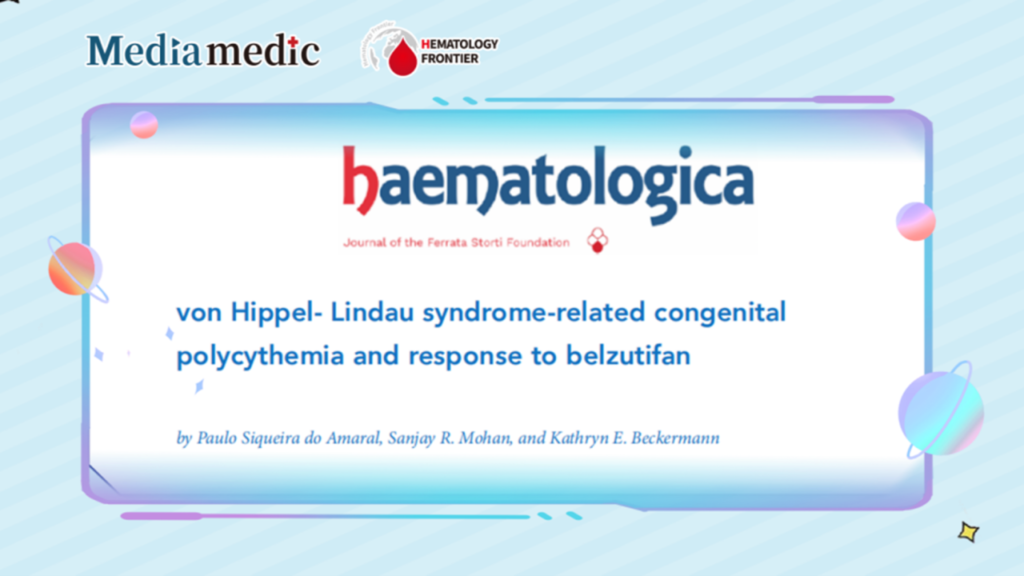
The "News Express" column aims to bridge the gap between cutting-edge research and clinical practice, enabling hematology enthusiasts and professionals to quickly grasp industry trends, spark innovative thinking, and broaden their professional horizons. Hematology News carefully curates the latest hematological research findings from top global journals. Each selected article represents a fusion of science and clinical practice, delivering the essence of hematology's advancements straight to you. Let knowledge transcend boundaries, and exploration never cease. We invite you to follow the column and join global hematology elites on a journey of scientific discovery! This issue features a case report from Haematologica on VHL-associated congenital polycythemia (CP).Von Hippel-Lindau (VHL) disease is a genetic disorder that affects approximately 1 in 36,000 newborns. It can lead to various tumors in the brain, retina, kidneys, pancreas, and ears. Patients with VHL disease may also present with Chuvash-type erythrocytosis (CE), a condition caused by mutations in the VHL gene, characterized by an overproduction of red blood cells, fatigue, and headaches.
The loss of VHL protein results in the accumulation of HIF-1α and HIF-2α, which activates genes responsible for angiogenesis and erythropoiesis. Belzutifan is a novel drug that inhibits the activity of these genes. Research has shown that Belzutifan is effective in treating VHL-related tumors, reducing erythropoietin (EPO) levels, and decreasing red blood cell production.
In the reported case, a 30-year-old female with congenital polycythemia, carrying two mutations in the VHL gene, was treated with Belzutifan. Following treatment, her hemoglobin levels decreased and eventually returned to normal. Although the dosage was reduced due to anemia, her hemoglobin and EPO levels remained stable.
Chuvash-type erythrocytosis is a rare form of VHL disease, linked to mutations in the VHL gene. Currently, data on treating CE are limited, but Belzutifan has demonstrated efficacy in patients with VHL disease in Phase II clinical trials, despite anemia being a common side effect.
This case marks the first reported use of Belzutifan in a patient with VHL-associated CE. While further research is needed to assess its long-term effects, Belzutifan shows therapeutic potential. It is also crucial to manage other risk factors and ensure regular follow-ups to monitor VHL-related conditions.


